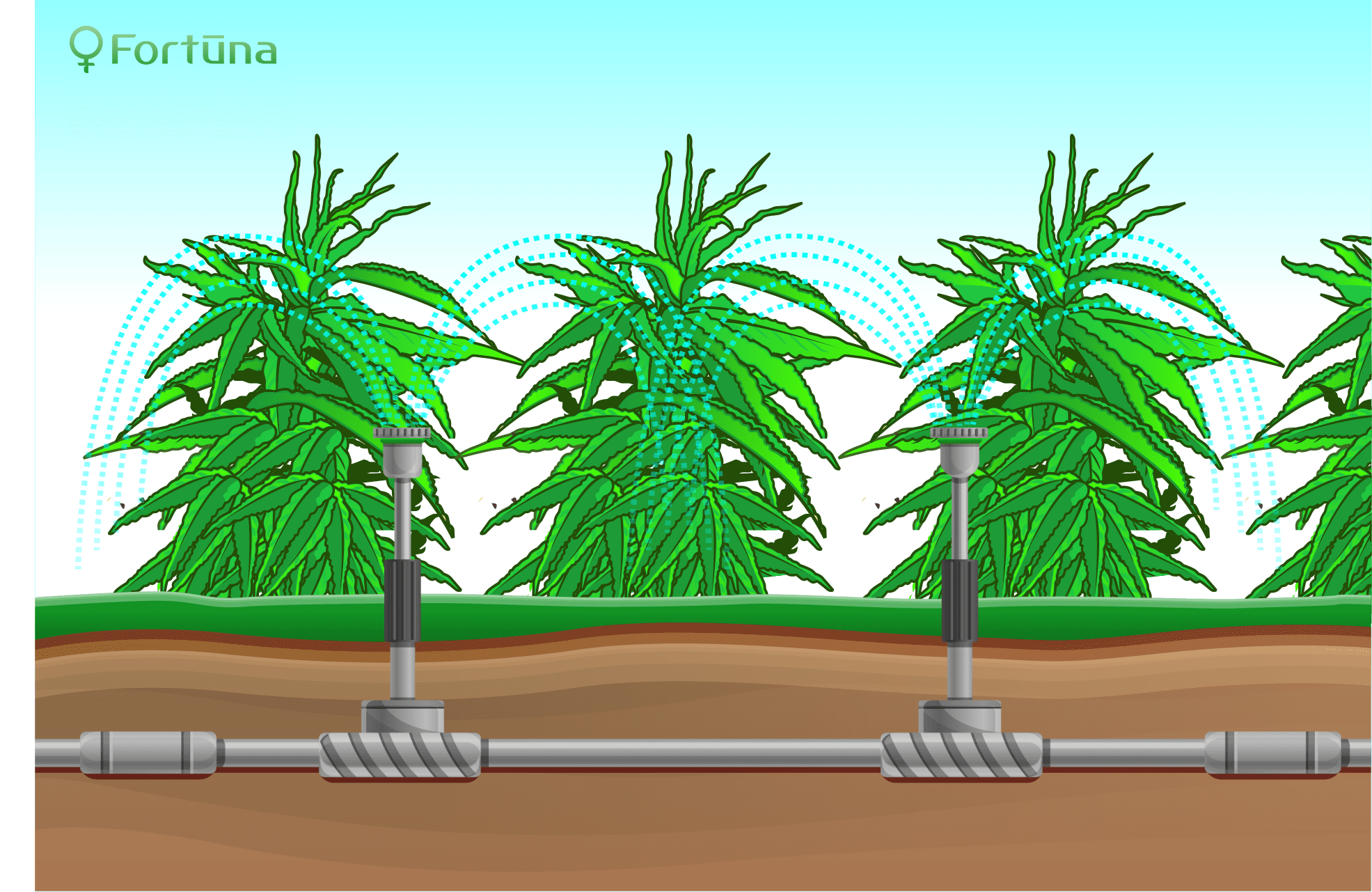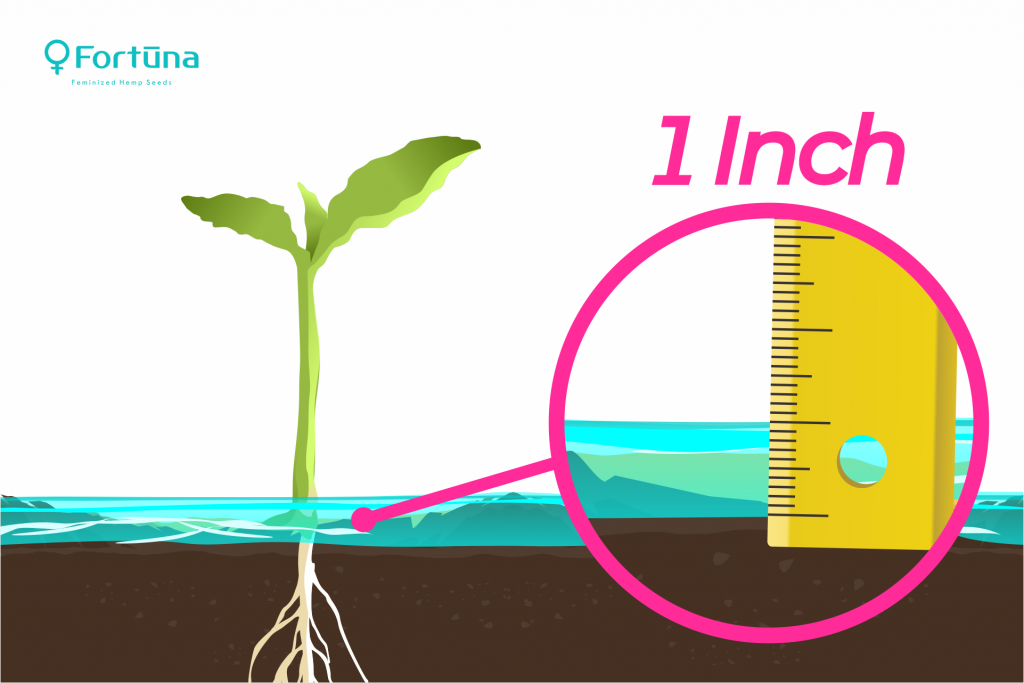
- CBD
-
by gu
Ideal moisture for growing hemp is an essential factor in the cannabis growing industry. Without the right amount of water in the soil and air, hemp crops may develop problems that could result in low yields. Hemp growers need to learn the proper moisture levels for the harvest to produce high-quality hemp that fetches a fortune at the market.
Moisture levels play a vital role in determining the best soil for hemp growing. Farmers who grow hemp must ensure they provide the right environment for cannabis plants to thrive. Too little or too much moisture in the soil and the hemp will take a hit.
Hemp Growing Water Needs
Contrary to popular belief, hemp isn’t as immune to drought as many people may want to believe. True, it can grow with minimal moisture, but the yields would not be as much as they would if farmers supplied enough water. Growers must irrigate their weed plants if they hope to achieve a bumper harvest.
Unlike other crops, hemp plants struggle under low moisture conditions. Reports from the Institute of Cannabis Research at Colorado State University conference indicated that hemp would not do well in areas without abundant rainfall. Since rainfall is erratic or insufficient in some areas, hemp farmers must be ready to supply additional moisture to their plants.
Hemp requires approximately 25 to 30 inches of rain a year in its early stages of growth. If the rain were consistent, there would be no need to worry about moisturizing the hemp farm. Unfortunately, rain is often unpredictable; it may come too early or too late and could be excessive or insufficient for successful hemp crops.
The ideal moisture for growing hemp also depends on the type of soil. Some soils have a low ability to retain moisture, so even if there were enough rainfall, a lot of the water would drain away, leaving the earth dry. Sticky soil may not allow easy percolation of water to the roots of the plants.
Also, some hemp growers would love to farm it indoors to control the environment for better results. They would still need to learn the ideal moisture levels for growing hemp in each unique environment.
Ideal Moisture for Growing Hemp: Irrigation
Since hemp requires more water and nutrients to grow than grain crops, growers must often supplement moisture through irrigation. To be clear, optimal moisture levels increase the chances of achieving better yields.
To achieve optimal moisture levels in indoor or outdoor gardens, hemp farmers must irrigate accordingly. Although the plant may be relatively tolerant of drought, growers will experience better results if they irrigate their plants, as well. Farmers can achieve heavier weight and more concentrated CBD levels if they supply their plants with enough water.
Hemp crops require 20 to 30 inches of water every season. Those growing in places that experience sufficient rainfall would have nothing to worry about. However, the weather is always unpredictable. As such, they must plan proper irrigation for their hemp farms. Growers in areas prone to drought have no choice but to irrigate their farms regularly.
The type of soil in which the hemp is growing also determines the amount of water required. Sandy soils require twice as much water as medium soils because they drain quickly. However, farmers have to ensure the seedlings don’t get drowned when irrigating the farm.
Hemp requires more water during the vegetative stage than the flowering period. This is because they need plenty of moisture to transport nutrients to every part of the plant, especially as the foliage grows bigger. At this point, farmers need to install soil sensors to maintain soil moisture at about 80 percent.
Hemp Crop Irrigation System
With a proper understanding of the ideal moisture for growing hemp, farmers can choose the best irrigation method for their crop. Hemp can be challenging to grow without knowledge of its requirements. But novice farmers can grow hemp comfortably with just a little knowledge. All they need to know is that this crop requires high nutrient and water demands. It also requires well-aerated soils, and it is what determines the irrigation method to use. The irrigation method for consideration must be one that doesn’t clog up the ground.
Ideal Moisture for Growing Hemp: Drip Irrigation
 Since hemp needs well-aerated soils but plenty of water, choosing an irrigation system that meets such requirements can be challenging. While any irrigation type can work, not all can leave the soil with the level of aeration needed for hemp growing. Drip irrigation comes in handy here.
Since hemp needs well-aerated soils but plenty of water, choosing an irrigation system that meets such requirements can be challenging. While any irrigation type can work, not all can leave the soil with the level of aeration needed for hemp growing. Drip irrigation comes in handy here.
Also known as micro-irrigation, drip irrigation delivers moisture directly to the root zones of the cannabis plant. This means that growers won’t be wasting water on areas surrounding the plants where weeds can quickly develop due to the moisture. Also, the dripping water does not flood the soil; hence, it helps maintain the earth’s aeration levels.
Drip irrigation also keeps the leaves dry, preventing the development of waterborne diseases. This risk is prevalent in other irrigation methods, such as overhead, where some water finds its way on the leaves instead of the roots. Also, this method spills water onto the surrounding areas, encouraging the growth of weeds.
Using the drip method also leads to high water efficiency. Some farmers use it alongside plasticulture for better outcomes. The drip method releases a small amount of water into the soil, gradually moisturizing the surrounding root area. There is no chance of flooding or spilling and wasting water. As such, this method is incredibly cost-effective.
The Process of Drip Irrigation
Hemp growers who adopt the drip irrigation method use drip tapes. They lay these tapes in long straight rows, ensuring that every row of the hemp plants has access to the dripping water. Drip tape suppliers recommend using emitter spacings of 12 to 24 inches in low or medium flow rates.
Some cannabis farmers use from four to 60-inch emitter spacing depending on the end-use of the hemp crop. This is not an issue because drip irrigation is flexible, and farmers can make adjustments relative to the prevailing conditions.
Hemp farmers should consider the following factors before installing drip irrigators:
- Water source: Identify the water source and determine its flow rate. It is also essential to know if the emitter is clean and the volume available.
- Filtration: Regardless of the water state, it must undergo filtration before dripping to the hemp farm. Farmers need to ensure their drip emitters have the right filters.
- Water pressure: Drip irrigation works well with lower pressures, such as eight to 15 PSI. Higher pressure may burst the thin-walled tapes.
- Automation: It makes the operation more manageable and more convenient. Hemp growers can consider installing controllers for the automatic process.
- The health of the plants: Plant health is the topmost consideration to make. Drip irrigation may be safer, but farmers should still be on the lookout for any anomalies, such as yellowing leaves, rotting and withering.
Crunching the Numbers
 Most crops in the Midwest require about a quarter-inch of water every day during their peak water need. During the peak reproductive stage, hemp water demands increase. As hemp flowers, it produces the highest levels of biomass.
Most crops in the Midwest require about a quarter-inch of water every day during their peak water need. During the peak reproductive stage, hemp water demands increase. As hemp flowers, it produces the highest levels of biomass.
However, many farmers provide a whole inch of water every four days instead of a quarter-inch daily, which is standard in the Midwest. Applying irrigation after four days saves on the frequency of using the irrigation system
If a farmer has 220-foot-long rows, they will need 110 gallons per hour, as derived from calculations involving multiplication of the rows’ length by half a gallon of water per square foot per hour from the tape. This means that such a farmer will be running the irrigation system for 2.4 hours to supply enough moisture to their hemp farms.
Some farmers choose to use checkbook scheduling methods to determine how much irrigation can bridge the gap between the ideal moisture for growing hemp and the amount supplied naturally via rainfall. An illustration of such a checkbook is available at the University of Minnesota.
Other Irrigation Options
For farmers who can’t cope with drip irrigation, other options are available. They include the following:
- Pivot irrigation: This type of irrigation system uses less water than flood irrigation but is appropriate for people with a pivot system already in place. It consists of a sprinkler pipe drawing water from the source and delivering it to a row of hanging sprinklers that rotate as they spray water onto the farm.
- Flood irrigation: This is one of the oldest methods of supplying water to crops. It covers the soil’s surface with ponded water, as reported by the US Geological Survey. In flood irrigation systems, farmers pump or pour water into the cannabis field, where it flows around the crops, spreading all over.
It is important to note that these options may be cheaper if farmers already have pivot systems in place or have a free water source, such as ponds or lakes. However, they are not the safest for cannabis crops. The water from the pond or lake may not be clean, while the sprinklers spraying water onto the crops from overhead may cause diseases or molds to develop.
Creating a Hemp Irrigation Plan
Hemp farmers need to get everything right on irrigation because it can make or break the cannabis crop. Crafting the right irrigation plan can be challenging as it requires customized calculations based on the soil’s quality, size of the hemp field, prevailing weather or climate, and the farmer’s budget.
First-time farmers may find it overwhelming, so they will be better seeking agronomists or professional irrigation planners. The consultant will draw the hemp field layout, determine the soil and water needs, and provide a suitable irrigation plan. Armed with the irrigation plan, the farmer can then hire an irrigation expert to install the irrigation system.
Another option would be procuring the services of a certified agronomist. What is best with an agronomist is that they can help you with any aspect of hemp farming preparation and management. They can find high-quality hemp seeds and make irrigation recommendations as well.
An agronomist may not install the irrigation system. However, they will design a plan after conducting soil and water tests during the growing season. It is the best option for farmers who need professional help to improve their chances of landing a bumper cannabis harvest. But those growers who need only the irrigation system and its installation will do well hiring an irrigation technician.
Ideal Moisture for Growing Hemp: The Bottom Line
Learning and understanding the ideal moisture for growing hemp is as vital as the hemp itself. Farmers would gain nothing if they purchased high-quality feminized seeds only to experience low yields resulting from low moisture soils. It is a crucial part of the planting, cultivating, and harvesting good hemp.
While new farmers may face some challenges establishing the right balance, they can get help from professionals because it is worth all the trouble. Hemp and hemp products are in high demand worldwide, and each hemp plant is worth lots of money. Investing in its growth and management is a worthwhile venture.
As the cannabis industry continues to grow, farmers can take advantage of the growth to cultivate high-quality hemp for the ever-expanding hemp market. Apart from medical and recreational uses, hemp has applications in many other industries, including textile, pharmaceutical, food, and more.
About Fortuna Hemp
Fortuna Hemp is one of the top US-based hemp seed banks providing high-quality hemp seeds to clients across the nation. These seeds promise high yields if farmers subject them to the right conditions for growing, such as ideal moisture levels, whether for private hemp cultivation or industrial use.
If you need more information on the best conditions for growing hemp or the best feminized hemp seeds for your indoor or outdoor gardens, please contact us. And while at it, kindly leave a comment in the box below and let us know your reaction.

